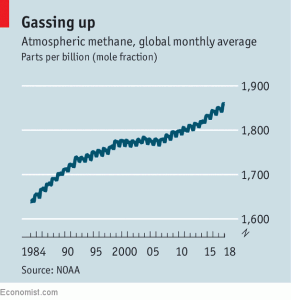Editorial Essay by Ann Bristow, Baltimore Sun, June 15, 2018
Maryland is at a significant choice point looking toward our energy future: Aggressively build clean renewable electricity generation or lock electricity generation into 30 and more years of fossil fuel-fed utilities — notably the dirty fuel with the clean-sounding name, natural gas. The first offers public health benefits, reduction of greenhouse gasses and thousands of sustainable jobs, and the second offers air pollution, public health and safety risks, and fewer and less healthy employment opportunities.
Two of our nation’s largest utilities announced they would no longer build new, natural gas-fired power plants to produce electricity because they are not cost effective. Instead, they plan to build large solar arrays, to inexpensively meet electricity demand. And last month, Rhode Island and Massachusetts awarded large contracts to purchase electricity from offshore wind. Literally, the world is waking up to solar and offshore wind potential.
However, Gov. Larry Hogan has set his sights on millions of dollars of investments in building natural gas infrastructure, announcing that Maryland would “kick-start” such development with settlement money from the AltaGas and Washington Gas merger. Mr. Hogan supported drilling under the Potomac River at Hancock to install pipeline to bring fracked gas from the Marcellus shale of Pennsylvania to an area of undemonstrated need for additional piped gas in West Virginia.
Maryland’s Department of the Environment sees natural gas as a bridge fuel, although NASA has demonstrated that methane, the primary ingredient in natural gas, is a more potent greenhouse gas in the short term than carbon dioxide. And the overwhelming majority of climate scientists note that the short term is when we need to take decisive action to reduce climate-forcing and harmful gasses.
As a commissioner on Maryland’s Marcellus Shale Safe Drilling Initiative, which studied fracking for Maryland, I have been asked why our governor would ban fracking in Maryland for public health reasons, yet underwrite harm to our neighbors in Pennsylvania and West Virginia by advocating for fracked gas distribution and end use in Maryland. Campaign history and financing supply the answer.
Gov. Hogan ran in 2014 on a platform supporting fracking. However, he seized the opportunity to position himself favorably for the 2018 gubernatorial election the day he learned that the Maryland Senate had a veto proof majority for a legislative ban on fracking.
Gov. Hogan knew that 2016 polls showed both Democrats and Republicans supported a fracking ban, and he has since enjoyed the limelight as for signing the state’s legislative ban, among the first in the country. Meanwhile, behind the scenes his administration negotiated the AltaGas/WG merger settlement, and our governor has received tens of thousands of dollars in contributions from the fossil fuel industry and gas and electric utilities — including the Koch Brothers.
Maryland’s relatively modest commitment to offshore wind — which once was pioneering — is effectively stalled, and the current administration has failed to provide leadership for its expansion. This is in stark contrast to other Atlantic seaboard states whose timely embrace of emissions-free offshore wind will position them to favorably compete for shipping ports, port-based manufacturing and the many associated jobs.
The contrast is sharp. Mr. Hogan’s allegiance to the fossil fuel industry will line the pockets of multinational corporations and big banks while harming our climate. This administration apparently would rather see dangerous pipelines and toxics-spewing gas compressor stations — with their campaign coffer harvests and guaranteed rates of returns for investors — than provide leadership for land use decisions that would invite large-scale solar investment. If you were to ask Marylanders if they would rather have large solar arrays or a compressor station in their community, what do you think would be their answer? What do you think would be the best for the health of you and your family?
Coal-fired electricity generation is phasing out in Maryland. This is good news for Marylanders’ health and safety. But replacement electricity generation must be ready to fill this vacuum. Clean or dirty, they will compete for investments and grid space. One will outpace and outplace the other.
Which position do you want the governor elected in November 2018 to occupy and promote?
>>> Ann Bristow is an emeritus professor at Frostburg State University and commissioner with the Marcellus Shale Safe Drilling Initiative.

